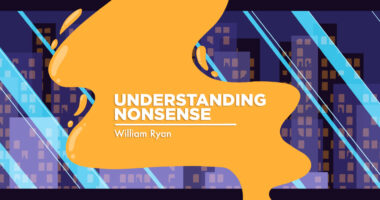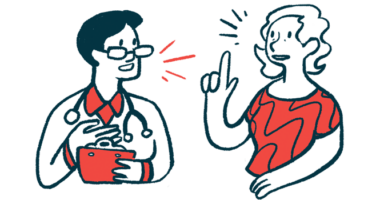A blessing and a curse: My experience with tobramycin toxicity
The antibiotic saved my life but also left me with an invisible disability

In my life with cystic fibrosis (CF), the antibiotic tobramycin has saved my life countless times. But 15 years ago, it took something from me that I’ll never get back.
Toxicity from the drug permanently destroyed the tiny hair cells in my inner ear, leaving me with vestibular damage that turns simple tasks into great challenges. It’s the kind of invisible disability that exists alongside CF and life after a double-lung transplant. It hides beneath the surface, profoundly affecting me every single day.
Tobramycin is a cornerstone therapy to treat the bacterial infection Pseudomonas aeruginosa. While highly effective, it belongs to the class of antibiotics known as aminoglycosides, which carry the well-documented risk of ototoxicity, or damage to the inner ear. That can result in hearing loss, vertigo, and chronic balance impairment.
When the ground beneath me vanishes
While I was being treated with tobramycin, despite doctors monitoring my blood work, my vision started to become erratic, a condition called oscillopsia. Objects in my view seemed to bounce and shift with every step I took. Walking independently became nearly impossible because I’d frequently stumble and fall. The reassuring sense of solid ground vanished, replaced by the constant sensation of standing on an unsteady surface, similar to trying to stay balanced on a floating dock. As a result, I had to have vestibular rehabilitation therapy and couldn’t drive for six months.
Although my body has since learned to adapt and compensate, I still become a different person when I need to walk to the bathroom at night. My hand trails along the wall as a survival instinct. Without visual references, my damaged vestibular system can’t tell my brain which way is up. I could be standing straight up or tilting dangerously to the side, and my body doesn’t know the difference.
Wind is another enemy I never anticipated. A breezy day that others might find refreshing can send me tumbling, as if I’ve had too much to drink. My body will sway side to side, searching for the stability that my inner ear can no longer provide.
Then there are the narrow spaces of grocery stores and clinic hallways. I appear intoxicated and can feel other people staring at me. They make assumptions about me because they can’t see my oscillopsia. They don’t know that my eyes are working overtime to compensate for my dysfunctional vestibular system.
CF is already a highly complex disease. There are many more pressing issues and immediate threats to address than vestibular damage. Yet it affects everything I do. It’s there when I wake up, during my entire day, and in the middle of the night. It affects how I exercise, which is an important component of how I manage my pulmonary health. It’s a constant presence that is invisible to everyone else, yet impossible for me to ignore.
I know my situation isn’t the norm. Tobramycin toxicity doesn’t affect everyone the same way, and this antibiotic remains an essential tool in treating CF. But that’s precisely why this conversation matters. For me, these side effects are real and permanent. Patients deserve to understand the risks before they decide to take it.
Over time, I’ve learned my limits, work-arounds, and other strategies for navigating life with balance issues. I won’t stop talking about the issue, though, because I’m sure that some other CF patient is weighing treatment options right now.
Tobramycin is one of the reasons I’m still alive today. So my hope is to spread awareness about the risks so that no one else will have to go through this, in addition to everything else that living with CF entails.
Note: Cystic Fibrosis News Today is strictly a news and information website about the disease. It does not provide medical advice, diagnosis, or treatment. This content is not intended to be a substitute for professional medical advice, diagnosis, or treatment. Always seek the advice of your physician or other qualified health provider with any questions you may have regarding a medical condition. Never disregard professional medical advice or delay in seeking it because of something you have read on this website. The opinions expressed in this column are not those of Cystic Fibrosis News Today or its parent company, Bionews, and are intended to spark discussion about issues pertaining to cystic fibrosis.









Shannan burk
Hi Jennifer,
I read your story like I was reading my own. Tobramycin saved my life but left me in ruins.
This happened in 2014. I had to use a walker, I couldn’t drive, I absolutely could not walk all in the dark. Shopping malls, Costco became a nightmare with the oscillopsia.
Vestibular rehab helped a lot. I still have bad days but over all I’m still learning how to live with it.
I made a post regarding the side effects of tobramycin that doesn’t get talked about. I told my story. I was bombarded by others with unkind messages. Someone ended up blocking me and deleting my post.
I wasn’t trying to scare anyone, I was trying to educate.
I’m glad your story got out.
I wish you the best. I’m turning 60 and I’m still fighting CF!
Jen Cogliano
Hi Shannan, Thank you for your comment though I’m so sorry to hear you relate to my story. I was the same with not being able to drive for close to a year. Back in “our day” there weren’t alternative antibiotic treatments and it’s a real shame this happened to us, and I’m sure many others our age. Bless you for continuing to fight! Bless you for being 60 - Keep going, a true inspiration!